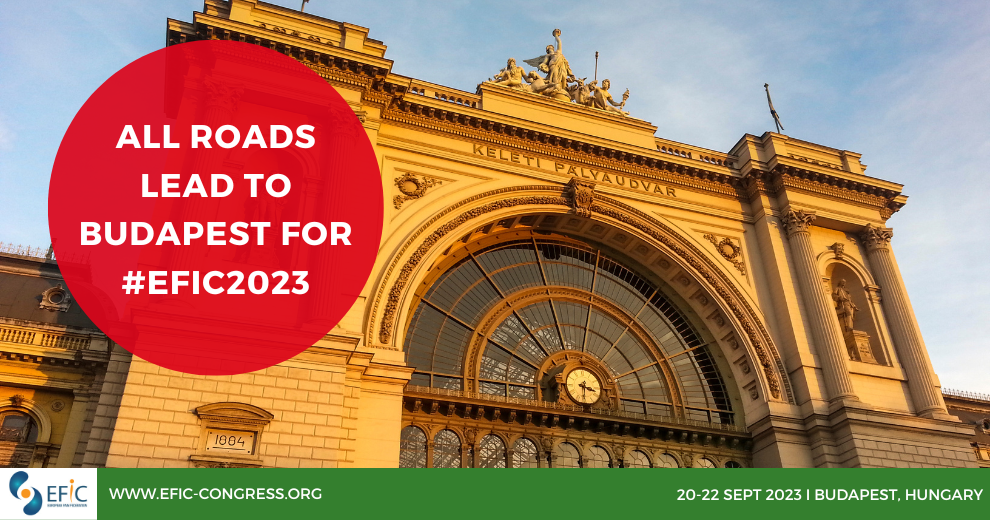#EFIC2023 will be taking place in Budapest, situated in the heart of Central Europe, therefore easily and quickly accessible by road, rail and air from almost every major European city. The rich history, unparalleled architectural and cultural heritage make the city, also called the Queen of the Danube, an especially attractive destination.
Traveling to Budapest by train
There are 3 main international railway stations in Budapest: Eastern (Keleti), Western (Nyugati) and Southern (Déli). More than 50 trains a day provide direct links between Budapest and 25 other European capital cities, for example:
Vienna: 2.5-3h, multiple direct trains daily
Bratislava: 3h, multiple direct trains daily
Zagreb: 6-7h, multiple direct trains weekly
Prague: 7h, multiple direct trains daily
Munich: 7.5h, direct trains daily with an overnight option as well
Belgrade: 8h, multiple direct trains daily
Ljubljana: 9-10h, multiple direct trains weekly
Warsaw: 10.5h, direct trains daily with an overnight option as well
Zürich: 10-12h, direct trains daily with an overnight option as well
Berlin: 12h, direct trains daily with an overnight option as well
There is also a popular network of Inter City trains linking Budapest with other main Hungarian towns. All three international railway stations are part of the Budapest Underground system, the Metró. The Déli and Keleti are stops on the Red (Number 2) line and the Nyugati is on the Blue (Number 3) line. We suggest using this website for domestic Hungarian trains.
Traveling to Budapest by bus
All international buses arrive and depart from Nepliget Bus station, which is located on the corner of the People’s Park. You can easily get by bus to Budapest with Eurolines, FlixBus, Infobus, Regiojet depending on the country of departure. The main arrival point in Budapest (Nepliget Bus Station), located outside the city center but well served by the city’s efficient metro system. For further information please visit the following website: https://www.omio.com/buses/budapest
Traveling to Budapest by car
In Hungary there are first-class high-speed highways. For the time being the total length of these Hungarian ways is around 1900 km. M1 connects Hungary not only with Austria and Slovakia, but through these countries the western, southern and northern part of Europe, too.
Traveling to Budapest by plane
It’s very easy to get to Budapest by plane – several low-cost airlines and also the national airline have great offers and services. Budapest International Airport is sixteen kilometres south-east of downtown Budapest. From the Ferihegy Terminal 2A is within the Schengen borders, Terminal B to countries outside the Schengen Convention depart airplanes.
Getting to the HUNGEXPO congress venue
If you are coming directly from the airport, you can take bus 100E to Astoria metro station (1 stop ~35 minutes). At Astoria, you can change and take the M2 metro and follow the same route as someone who comes from the direction of the city centre. Please note you need to purchase a separate airport shuttle ticket to take this bus.
HUNGEXPO is located between two metro stops. If you are coming from the city centre take M2 metro in the direction of Örs vezér tere, you will have 2 options:
• Get off at Pillangó utca and walk 12-15 minutes to the entrance
• Get off at Örs vezér tere where bus 10 the EFIC shuttle departs. The route of bus 10 is to circle the HUNGEXPO, all of the stops are either the 2 metro stops or gates to HUNGEXPO. Please get off at Gate 2 to access the conference. At Örs vezér tere, there are signs indicating the direction towards the HUNGEXPO. Please note these are signs to the HUNGEXPO. No EFIC logo will be displayed.
